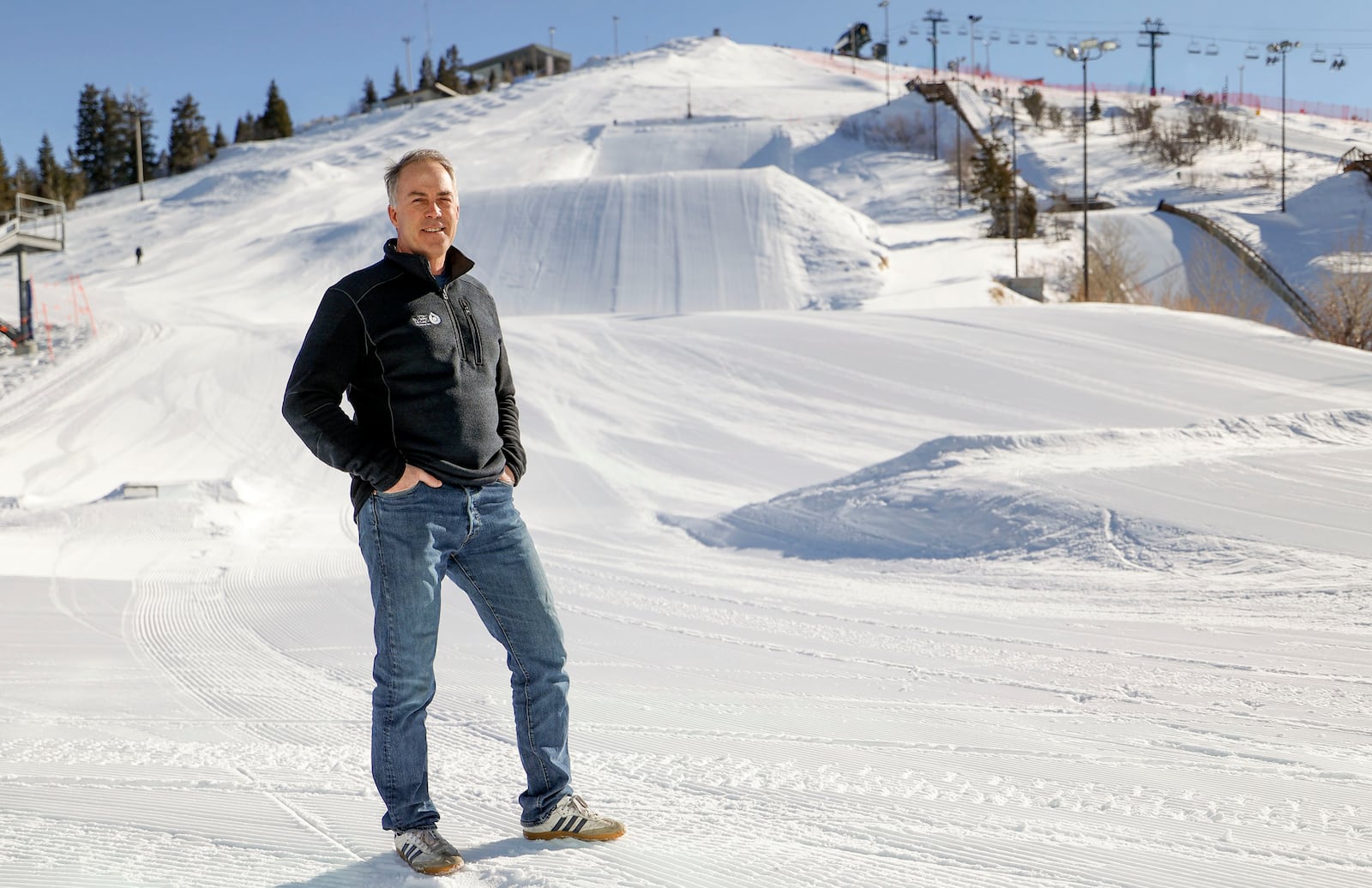If it’s feeling quieter around the Wasatch Front and Back this week, if getting onto the freeway is a little easier, the line at the supermarket a tad shorter, it might have something to do with all those athletes we sent to the Olympics in China.
The numbers are eye-popping. Of the 222 members on the U.S. Olympic Team, 75 to 80 (depending on who’s doing the counting) were either born in Utah, live and train here more than six months out of the year, and/or went to school here.
That adds up to more than a third of the entire U.S. team.
Fourteen U.S. Olympians are native Utahns. Only three states — California (29), Colorado (23) and Minnesota with all its hockey players (23) — have more, all with considerably larger populations. On a per-capita basis, no one touches Utah.
Colin Hilton is acutely aware of all this. As president and CEO of the Utah Olympic Legacy Foundation, he’s in charge of the facilities left over from the Salt Lake 2002 Olympics — the bobsled, luge and skeleton track and the ski jumps at Utah Olympic Park; the cross-country and biathlon courses at Soldier Hollow; the speedskating oval in Kearns — that have been preserved and account for Utah’s emergence as a Winter Olympics power. (As a separate country, Utah would have finished in the top 20 on the medals chart in each of the past two Games; this year should be the best yet).
But sitting in his office overlooking the bobsled track at Utah Olympic Park, Hilton has a different-than-expected take when he is congratulated for all the athletes the facilities he oversees have sent to China.
After first acknowledging the acclaim — “We’re so proud of the athletes from Utah who are in the limelight right now; that have persevered and achieved great things” — he is quick to add, “but that’s only part of the story, a small part.”
For every athlete going to the Olympics, Hilton likes to point to the thousands more who have gone through the training centers and not only learned life skills, but had a rewarding and enjoyable time doing it.

To illustrate what he means, he references a video that can be found on the foundation’s website, utaholympiclegacy.org. In it, a 10-year-old girl named Zia Terry is wearing a GoPro that films her first time off the 40-meter ski jump.
The video begins with a not-at-all-sure-she-should-be-here young girl at the top of the ramp being assured by her coach that she can do this. Finally, after considerable encouragement, in a quivering voice, Zia says, “Here goes something, I guess.”
Then she takes off down the ramp, lands the jump, and shouts, “this thing seems like nothing now! Woooooooooooh!”
“We’re a participant organization,” says Hilton. “Our measure of success is the number of participants: the people who learn to skate, who learn to ski jump, who do all the various things we have to offer. If all we did is train elite athletes, we’d have been out of business long ago.”
But of course, they do train elite athletes. And they have inspiring stories, too.
Hilton talks about one of them, a Nordic combined athlete named Jared Shumate. When he says he watched Jared grow up, he means literally. Jared lived in a house across the street from Hilton in their Park City neighborhood.
As a boy, Jared enrolled in a community “Get Out and Play” program sponsored by the nonprofit Youth Sports Alliance of Park City. That’s how he found his way to the ski jumps at Olympic Park and the cross-country ski trails at Soldier Hollow.
It turned out not only did Jared have talent, he had drive. The Olympic Park became his home away from home.
As Jared honed his skills, Hilton watched as Jared’s grandmother regularly dropped by the foundation’s offices at Olympic Park to make sure his training costs were covered. “She didn’t have a credit card but she would drop off postdated checks to make sure his monthly fee was taken care of. It caused a little more work for my staff but they made it happen. She was a rock. Now, after all these years, he gets to go to Beijing and represent his country in the Olympics.”
In Hilton’s book, Zia and Jared’s stories are equally compelling.
“For every story of Jared we have another 99 just like that of people who aren’t going to the Olympics. The athletes from Utah in Beijing right now are the byproduct of a good system, a system that puts athletes in the spotlight representing the United States at the Olympic Games, but also creates an environment for coaches and thousands more who use the facilities who don’t go to the Olympics.
“In a world where we think kids, and adults, should spend more time outdoors and less time on screens, we offer some exhilarating activities for not just a select few, but for anybody.”
In parting, Hilton says he would be remiss if he didn’t pay tribute to the Olympic dreamers who had the foresight 30 years ago to build facilities that would endure long after the Games.
“I’m super appreciative of the early community leaders who actually thought about doing more than put on a three-ring sporting event; who thought about what we were going to do with the facilities afterward; who came up with the concept of a legacy foundation that was put into a state resolution back in 1994.”
Thanks to that vision, 20 years later the ski jumps, skating oval and nordic tracks are not only standing but in great shape.
And for the next week or two, they’ll be a lot less crowded.

